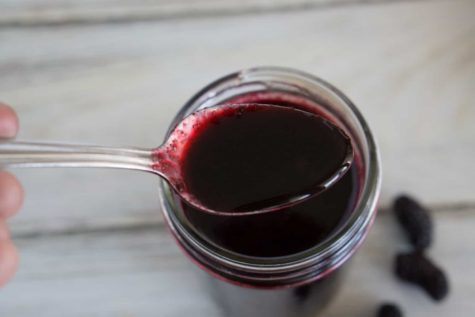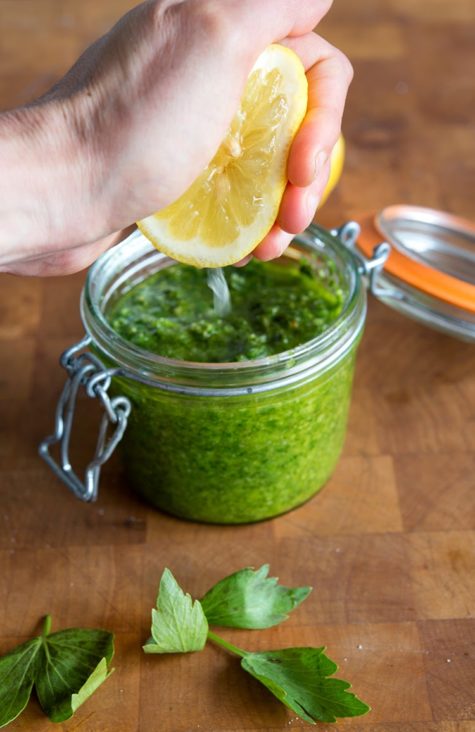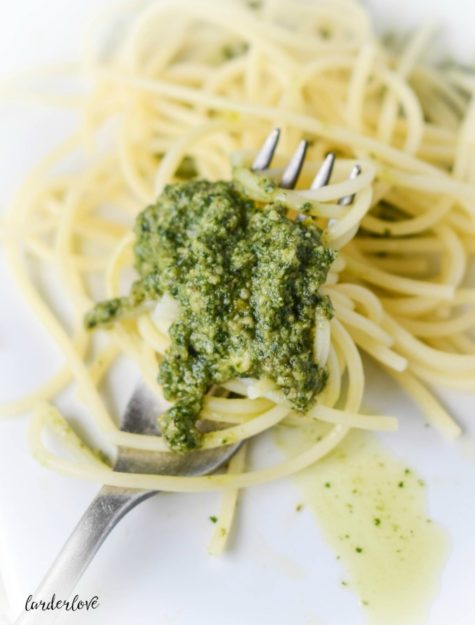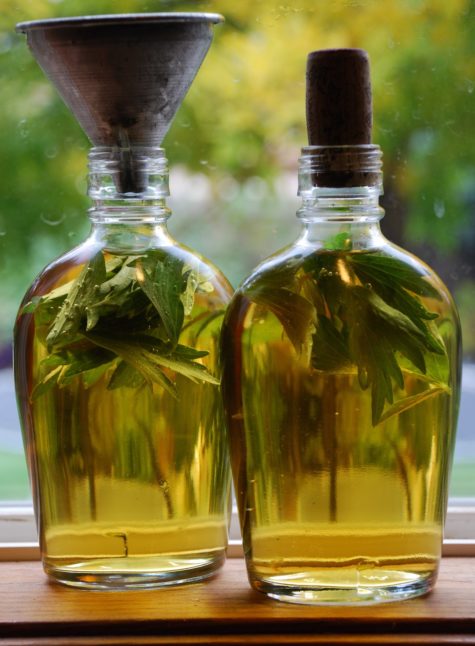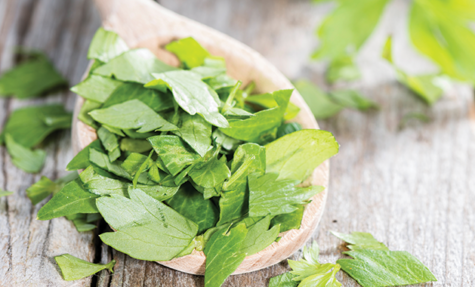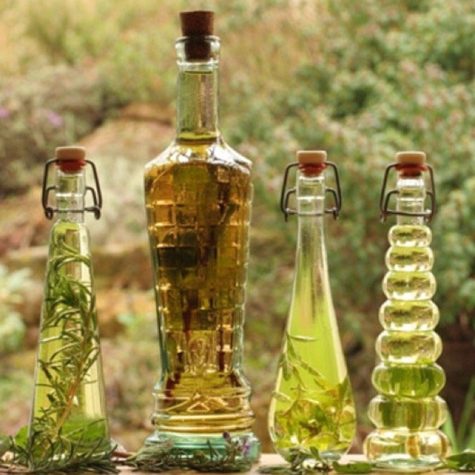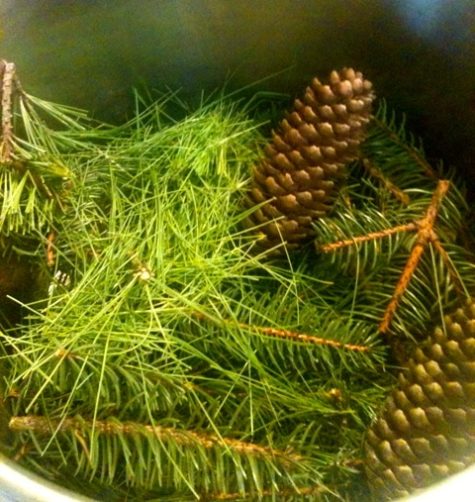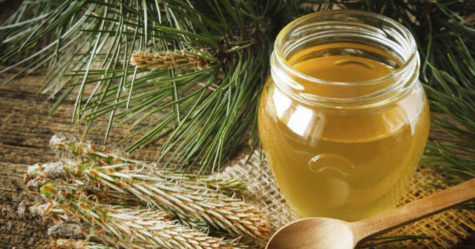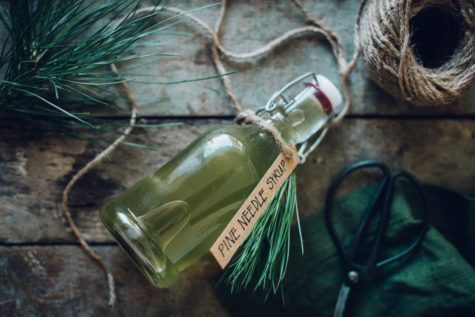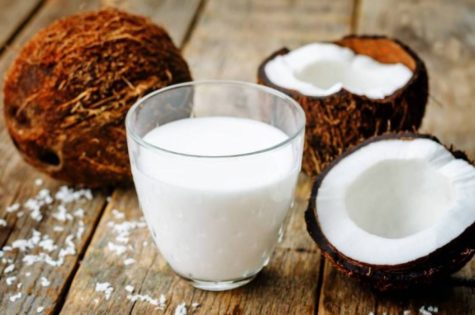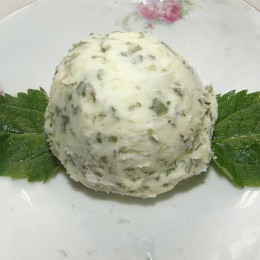Condiments
Mulberry Syrup
Sweet Mulberry syrup is excellent over pancakes, ice cream, and other foods. Here’s how to make it:
Mash one pint of berries in a cooking pot, add 2 cups of white sugar, and bring the mix to a boil for 10 minutes. No water is needed as the berries are juicy enough. Stir constantly to prevent burning. While the mix is still hot, pour through a strainer into a clean jar.
This is your finished syrup! Store it in the fridge for up to two months. Discard after that, or if it grows mold.
Source: Encyclopedia of Herbology
Lovage Vinaigrette
- 1 ¼ c. olive oil
- ¾ c. white wine vinegar
- ¼ c. chive blossom petals
- 1 t. honey
- 1 t. dijon mustard
- 10 lovage leaves, chopped fine
- 2 T. parmesan cheese
- 1 T. lemon juice
Combine all and shake vigorously.
About Lovage:
Lovage is an ancient healing herb, mostly used for its diuretic properties in cases of water retention and urinary difficulties, and also for pain and swelling (inflammation) of the lower urinary tract, for preventing of kidney stones, and to increase the flow of urine during urinary tract infections.
The seeds, leaves and leaf stems have a strong, earthy, celery flavor that enriches soups and stews and is particularly useful in vegetarian dishes, with rice, vegetable stuffings and nut roasts. More info on this herb can be found at the Encyclopedia of Herbology.
Recipe: Henriette’s Herbal Homepage
Lovage and Walnut Pesto
- 1 large handful of young fresh lovage leaves
- 2 tbsp walnuts
- 1 clove garlic chopped
- Juice and zest of 1 lemon
- Salt and pepper to taste
- 2-3 tbsp Olive oil
- 1 tbsp parmesan
Instructions
About Lovage:
Lovage is an ancient healing herb, mostly used for its diuretic properties in cases of water retention and urinary difficulties, and also for pain and swelling (inflammation) of the lower urinary tract, for preventing of kidney stones, and to increase the flow of urine during urinary tract infections.
The seeds, leaves and leaf stems have a strong, earthy, celery flavor that enriches soups and stews and is particularly useful in vegetarian dishes, with rice, vegetable stuffings and nut roasts. More info on this herb can be found at the Encyclopedia of Herbology.
Recipe: Larder Love
Infused Lovage Vinegar
This is a simple lovage recipe that can serve a multitude of purposes in your kitchen.
Fill a clean glass jar about half full with fresh leaves. Fill the jar with vinegar. Rice vinegar is particularly nice here but any would work.
Place a lid on the jar and leave in a cupboard for 2 weeks. Strain the leaves from the vinegar and store the vinegar in a glass jar for use.
Use in salad dressings, it’s tasty as the vinegar in Hot and Sour Soup too. Put it in fancy bottles with nice labels for gift giving.
About Lovage:
Lovage is an ancient healing herb, mostly used for its diuretic properties in cases of water retention and urinary difficulties, and also for pain and swelling (inflammation) of the lower urinary tract, for preventing of kidney stones, and to increase the flow of urine during urinary tract infections.
The seeds, leaves and leaf stems have a strong, earthy, celery flavor that enriches soups and stews and is particularly useful in vegetarian dishes, with rice, vegetable stuffings and nut roasts. More info on this herb can be found at the Encyclopedia of Herbology.
Recipe: Homespun Seasonal Living
Lovage Dip
- 3 hard boiled eggs
- ½ c. fresh lovage leaves
- ¼ c. minced parsley
- sprig of minced tarragon
- 1 c. cottage cheese
- 1 c. sour cream
- pepper to taste
Chill eggs, chop very fine. Mix with rest of ingredients and chill to blend the flavors.
About Lovage:
Lovage is an ancient healing herb, mostly used for its diuretic properties in cases of water retention and urinary difficulties, and also for pain and swelling (inflammation) of the lower urinary tract, for preventing of kidney stones, and to increase the flow of urine during urinary tract infections.
The seeds, leaves and leaf stems have a strong, earthy, celery flavor that enriches soups and stews and is particularly useful in vegetarian dishes, with rice, vegetable stuffings and nut roasts. More info on this herb can be found at the Encyclopedia of Herbology.
Recipe: Amherst Garden Club
How to Make Herbal Vinegars
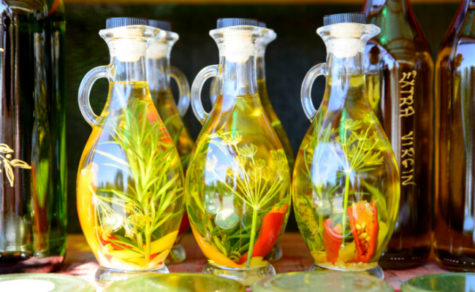
You can infuse any plant matter into vinegar to create your own funky blends! Although the preferred vinegar to use is organic apple cider you can use white or red wine vinegar too. A tip for jars is to check out second hand shops; there are some really nice bottles to be had out there!
Place several plants of your choice into the bottle. Fresh (clean and free from moisture) plant matter is best to use. You can even make an onion and garlic vinegar! Seal the bottle or jar you are using.
- Word of caution:
If you use a mason jar do not use the metal lid plate, use plastic because the acids can corrode the lid.
Let sit in a cool area (does not have to be dark) for 5 weeks; and after 2 weeks there will be flavor and you can test it. If you want it stronger let it sit longer. (I let my onion and garlic vinegar sit for 3 months before using it – wow!!)
Be sure to label your vinegar with what it is and the date you made it.
From: Edible Wild Food
How to Make Herbal Oils
Oils infused with herbs are a great way to utilize the healing properties of plants which contain volatile oils and fats.
Plants containing volatile oils are generally those commonly used in aromatherapy but they can be used as a salad oil too. Aromatic plants such as lavender, rosemary, thyme, sage, peppermint, chamomile, rose, yarrow, juniper and pine all make great oils.
You can use a variety of different oils as the base for the infusion. Olive oil is classic for the leafy herbs, sunflower, sweet almond, jojoba, or apricot oil all make a great base for creams and salves.
How to Infuse
You can use dried or fresh plant material, although fresh is generally best (except calendula-dry). If using fresh herbs, pick them on a dry day after the sun has dried the morning dew.
Make sure you pick clean plant matter; this is particularly important as you are not going to wash the plants. It must be as dry as possible to prevent spoilage, if there is any dirt brush it off with a soft-bristle brush or simply shake.
If using leaves such as comfrey or plantain, it’s good to let them wilt overnight to reduce some of the water content but flowers are best used fresh.
Chop fresh leafy herbs finely and lightly fill a sterilized, dry jar with the material. It’s important to cut the herb first as it exposes more of the plant to the oil, making for a better infusion. Flowers can be put in whole and dried herbs will most likely come already cut.
Fill the jar almost to the brim with oil because an air gap will promote oxidation and spoilage. Stir the contents with a wooden chopstick until all air bubbles have dispersed then place lid on.
You can leave it to infuse on a sunny windowsill or in indirect light.
Stir every day for the first two weeks then leave to infuse for another two to four, that’s four to six weeks in total. Calendula and some other oils are nice to double infuse- leave for 3 weeks, strain, then fill the jar with fresh flowers and pour the partially infused oil back on top and repeat the process.
Don’t forget to label your jars so you remember when to strain them. Strain through a sieve covered in cheesecloth or a jelly bag. If you used fresh material it is wise to let it stand for a week and check if any water has settled in the bottom of the jar. If so pour off the oil and discard the water.
Bottle the infused oil and be sure to label it including the best before date of the oil from the original bottle.
From: Edible Wild Food
Evergreen Syrup
Spruce tip syrup used to be quite popular back in the day. It was used throughout Europe and by the pioneers in North America. Since Spruce tips grow in the spring, this syrup would have been a seasonal type of medicine. I generally make my evergreen syrup using needles and cones as these parts of the plant are most readily available, and have medicinal value as well.
Energetically, evergreens are super appropriate to use as medicine throughout the winter. Although most of the trees have lost their leaves by now, evergreens remain green, showing us that nature lives all year long. Evergreens are also helpful with the particular ailments that abound during the cold and dark season.
For the following recipe, I harvested from Norway spruce (Picea abies) and White pine (Pinus alba). Not the time of year for the tips so I used needles, twigs, cones. It turned out quite delightful with a predominantly sweet taste and evergreen-almost citrus undertones.
Evergreen Syrup Recipe:
- White pine needles, some twig ~2 oz weight (other pine species can be used)
- Spruce needles, 2 cones ~2 oz weight (other spruce species can be used)
- Filtered water to cover
- Honey- half of the amount of decoction that remains (a 1:2 ratio honey:decoction)
- Water added to evergreens
The weights are listed because I had them handy, however there is no set amount – it all depends on how much syrup you want to make. Put the plant material in a pot and cover with water. Bring this to a boil and then lower to simmer until the liquid is halved. I used a spoon as a measuring stick. You can also have a measuring cup handy to pour the liquid back and forth until it measures half of water added.
Reducing the decoction to half of the original liquid took almost ten hours. The liquid is then strained out, put back in the pot without the needles, and then the honey is added. The amount of honey to add is equal to half the amount of concentrate, so 8 ounces of concentrate would require 4 ounces of honey, or a 2:1 ratio. Warm and stir the mixture, and the syrup is done!
Medicinal Uses for the Syrup
Tree medicine is very powerful when grounding is needed. It fosters opening up to old wisdom, and letting oneself be cared for by the Earth. The evergreen forest is quiet, and feels limitless and mysterious. Evergreen syrup is good medicine for reflecting, meditating, and otherwise conjuring up introspective energy.
Decomposition of evergreen needles lowers the surrounding soil pH to provide a particularly acidic environment, a fact that I find interesting and relevant to its use as an antiseptic.
In Europe, pine products have been used as medicine since the Middle Ages, and their medicinal properties are pretty uniform across the Pinus genus. It acts as a stimulating antiseptic for respiratory infections and stuck mucus, and is useful for bronchitis, and at onset of colds and flu to stop infection. Pine is also used for coughs and asthma.
Spruce is useful to cut phlegm in the throat and lungs, and for opening air passages. It is high in vitamin C content, and can also be helpful for bladder conditions and in cases of leucorrhea.
Overall, Spruce and Pine syrup is great medicine to have on hand during the winter and early spring season. It can be used for acute illness, and as a winter tonic to provide a bit of sunshine in the form of a local source of vitamin C.
Evergreen syrup is also really tasty, making it an easy medicine to work with as it can be added to hot water, porridge, pancakes, or taken straight.
From: Herb Geek
Making Coconut Milk
Here are tips for selecting, opening, and creating basic milk from the coconut. This coconut milk has numerous purposes and can be used in the recipe for Roasted Stuffed Papaya.
- Selection
Choose a coconut with a chestnut-brown hull, that is smooth with no apparent holes or mold. Shake and listen for a water sound. If it still contains water, it will be moist and tasty.
- Opening the Nut
Bore two holes in the eyes using an ice pick or sharp knife. The eyes are the dark brown spots at either end of the coconut. Pour the coconut water into a bowl. You can drink the coconut water, add it to your bath or beauty recipes, or save it for magickal or ritual uses. If you choose to save the coconut water, you will need to refrigerate or freeze it depending on how long you wish to keep it.
Now that the water has been drained from the coconut, hit the hull on a hard surface sharply a few times – it should crack open. You can also hit the nut with a mallet or hammer. This will be easier to do if the nut is wrapped with a dish towel to keep it stabilized.
Once cracked open, scoop out the flesh, which is called coconut meat. The coconut meat that comes out of the hard shell may have a thin brown skin that will need to be peeled off. This is most easily done with a potato peeler.
- Making Coconut Milk
Heat 1 1/2 cups water in a kettle on medium high heat. While it’s heating up, grate the coconut flesh and put it in a sieve over a large bowl. Just before the water comes to a boil, slowly pour it over the grated coconut in the sieve. Press the coconut meat with the back of a wooden spoon until all the water has been pressed out.
Pour this liquid into a Pyrex measuring cup with a pouring spout. Now pour the collected coconut milk once again into the sieve full of coconut meat and press it once again with the back of the wooden spoon and into the bowl.
Repeat 3 to 4 times. This makes about 1 1/4 cups rich coconut milk.
- Coconut Cream
To make coconut cream, bring `1 1/2 cups full-fat milk almost to a boil. Go through the steps above (making of coconut milk). Coconut cream is a bit denser, with a full-bodied, sweeter taste, just right for deserts and drinks.
- Toasted Coconut
Remove coconut from the hull with a sharp knife. With a potato peeler, peel off any remaining dark skin. Shred the coconut. Add 1 tablespoon olive oil to a cast iron skillet. Add a pinch of sea salt if desired. Toss until medium brown.
Toasted coconut is a great low-carb snack. I like to toast almonds and sunflower seeds with it and use this as a snack food when watching movies. You can also use toasted coconut as a topping for fruit salads, yogurt, or cereal.
From: Four Seasons of Mojo
Lemon Balm and Honey Butter
Mix half a stick (4 tablespoons) of softened butter with a pinch of finely chopped fresh lemon balm leaves. Add a drizzle of honey to taste. Yummy on hot fresh bread or biscuits!
Found at: The Nerdy Farm Wife
